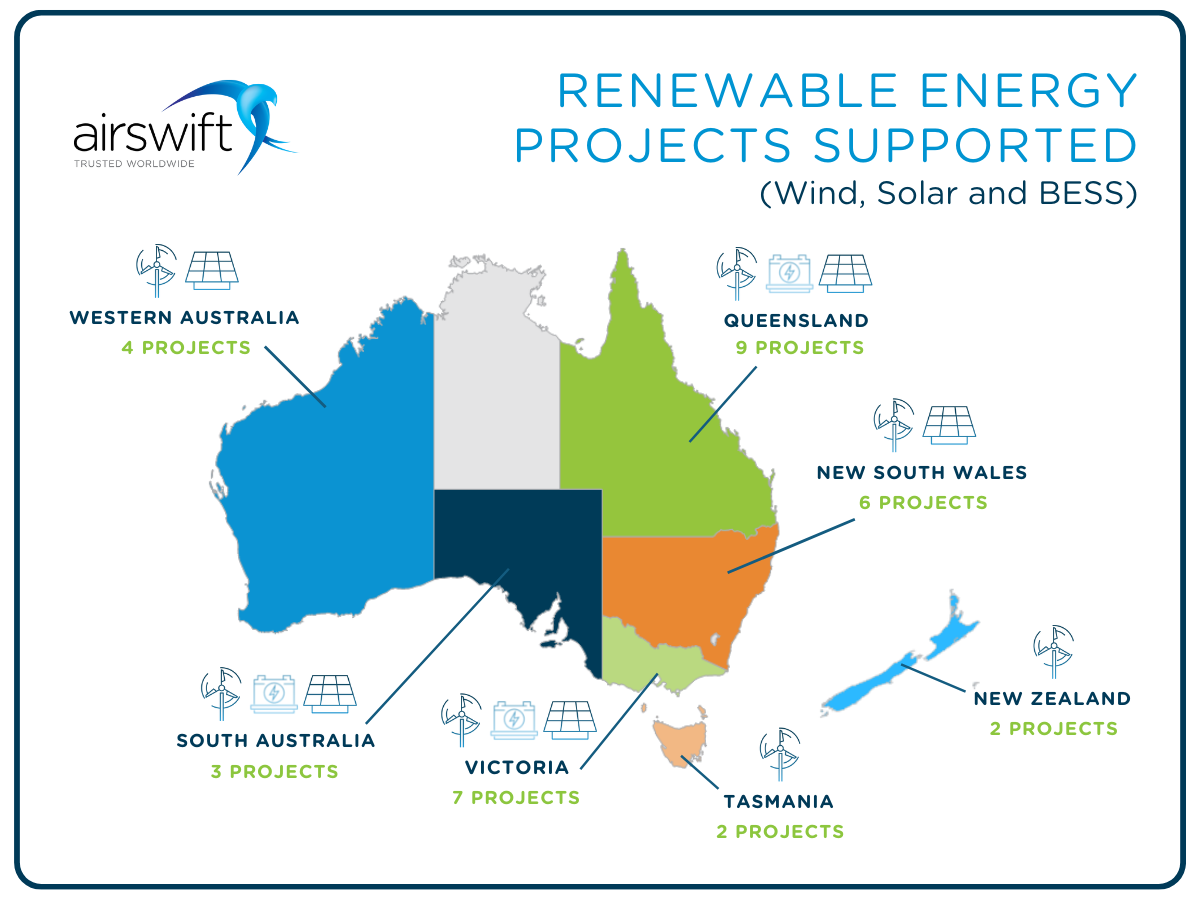
By
Nana Terra
November 18, 2024
Updated
November 18, 2024
The future depends on clean energy, and Australia knows that. Renewable electricity generation has more than doubled over the last decade in the region, with almost 40% of the country's electricity coming from green sources.
The good news is that the shift shows no sign of slowing down. The benefits of the energy transition can already be felt by the population, with the industry employing around 30,000 Australians.
The high number of renewable energy projects predicted for construction until 2030 will probably create more and more job opportunities.
Wind and solar are leading the way, but the country follows, investing in hydro and bioenergy and developing the battery storage and hydrogen sectors.
Coal electricity generation remains the most significant contributor to Australia's greenhouse gas emissions. However, Australia's 2024 Integrated System Plan projects that coal will be nearly gone by 2034, and the entire fleet will be retired by 2038.
What are the barriers to a green revolution in Australia?

In 2023, fossil fuels accounted for 65% of total electricity generation. This included coal (46%), gas (17%), and oil (2%). The share of coal in electricity generation continued to decrease, while the share of gas-fired generation was lower due to higher gas prices and increased generation from renewables. Renewables contributed 35% of total electricity generation in 2023.
Also, the clean industry must overcome ongoing grid connection and transmission challenges in the energy system. To learn more, watch the video below, "The Green Recovery: how Australia can clean up its act on energy."
Spreading the clean energy benefits to convince Australians
Another challenge the industry faces is convincing Australians that a 100% renewable future is not only possible but already happening and benefiting the population. Some Australians still don't know its advantages.
Because of that, Clean Energy Council Australia has launched a campaign called Renewable Energy is Here Now, spreading facts about the sector, for example:
- Three million homes across the country have rooftop solar.
- There are over 30,000 jobs in renewables, and they are growing every day.
- Renewable energy has almost tripled in the last decade.
According to Kane Thornton, the Clean Energy Council's Chief Executive, there is a clear business case for renewable energy.
The reality is, we know most Australians support renewable energy, but the climate debate has meant that a minority of loud voices have misled the public, resulting in some Australians feeling uncertain about a future powered by clean energy.
This campaign is about ensuring all Australians are certain about the facts and feel part of the exciting transition already taking place. It celebrates the work that the clean energy industry has already done to make a real difference to everyday Australians – lowering energy costs, delivering quality jobs and careers, and creating thriving, resilient communities.
Green jobs in demand in Australia
According to the Clean Energy Australia Report 2021, the construction boom for large-scale renewable energy projects has provided 10,395 MW and 13,502 jobs since 2017.
With continued acceleration in clean energy generation expected in upcoming years, we can anticipate an increase in renewable energy jobs. From 2025 to 2050, about 64,200 workers will be required to fill construction jobs.
The construction phase can take up to 3 years. Most construction workers are employed through subcontractors, who assign them to different energy projects. More than 50% of renewable energy employment is in engineering-type roles, including electrical and mechanical trades. Hiring managers must consider how to retain and attract talent to meet project demand in Australia.
As the project transitions into the asset management phase, remote workers continue to provide vital support, overseeing operations, maintenance, and troubleshooting through advanced monitoring systems. From 2025 to 2050, 129,600 jobs will be required to support the continual operations and maintenance of solar, wind, hydrogen, and storage infrastructure.
.png?width=1200&height=1200&name=Australia%20(4).png) Source: Accenture Analysis of data provided by Clamateworks 2023.
Source: Accenture Analysis of data provided by Clamateworks 2023.
Technological advances in clean energy: skills and accreditations required
Australia's renewable energy boom has driven significant technological advancements across solar, wind, hydro, and emerging sectors like hydrogen and battery storage. These innovations demand a workforce equipped with specialised skills and accreditations. Key competencies include electrical and mechanical engineering, project management, and advanced data analysis for monitoring and optimising energy systems.
Accreditations such as Clean Energy Council (CEC) certification for solar installation and safety credentials for high-voltage operations are highly valued. For emerging technologies, proficiency in hydrogen systems, storage solutions, and grid integration is increasingly in demand.
As renewable energy projects evolve, the role of technology specialists becomes critical in navigating the complexity of modern energy systems. For instance, grid connection engineers ensure the seamless integration of new power sources into Australia's energy network, while commissioning managers and technicians oversee the functionality and safety of installations.
Upskilling in renewable-specific software, remote monitoring tools, and compliance with international standards like ISO 14001 can provide professionals with a competitive edge in this growing field.
Green projects, regions, jobs and investments in renewable energy Australia

Discover top green energy jobs with Airswift
We partner with many companies in the sector, supporting projects through the entire project lifecycle from design to construction. See below some of the roles and skillsets in Australia:
- Construction / Project Director
- Project Manager
- Construction Manager
- Civil Supervisor
- Project Engineers
- Contracts Manager / Admin
- HSE Manager / Advisor
- Logistics Manager / Coordinator
- Project Admin
- Quality Manager / Engineer
- Primary / Secondary Design Engineer
- Grid Connection Manager / Engineer
- Commissioning Manager / Technicians
- Electrical HVOA Supervisors
- Maintenance Technicians
- Wind Turbine Technicians
- Asset Manager / Engineer
Airswift can help you
Airswift has been transforming Australian employment services. Starting in Brisbane in 2007, we've expanded to become a significant force across Australia, emerging as a leading voice in the IT and engineering sectors.
Our Renewable Energy division, with offices in Brisbane and Perth, has been the best-performing and fastest-growing division within ANZ since 2019. Today, the company supports 33 renewable energy projects in the region.

Want more insight into talent trends in the renewable energy industry? Contact our specialists.


